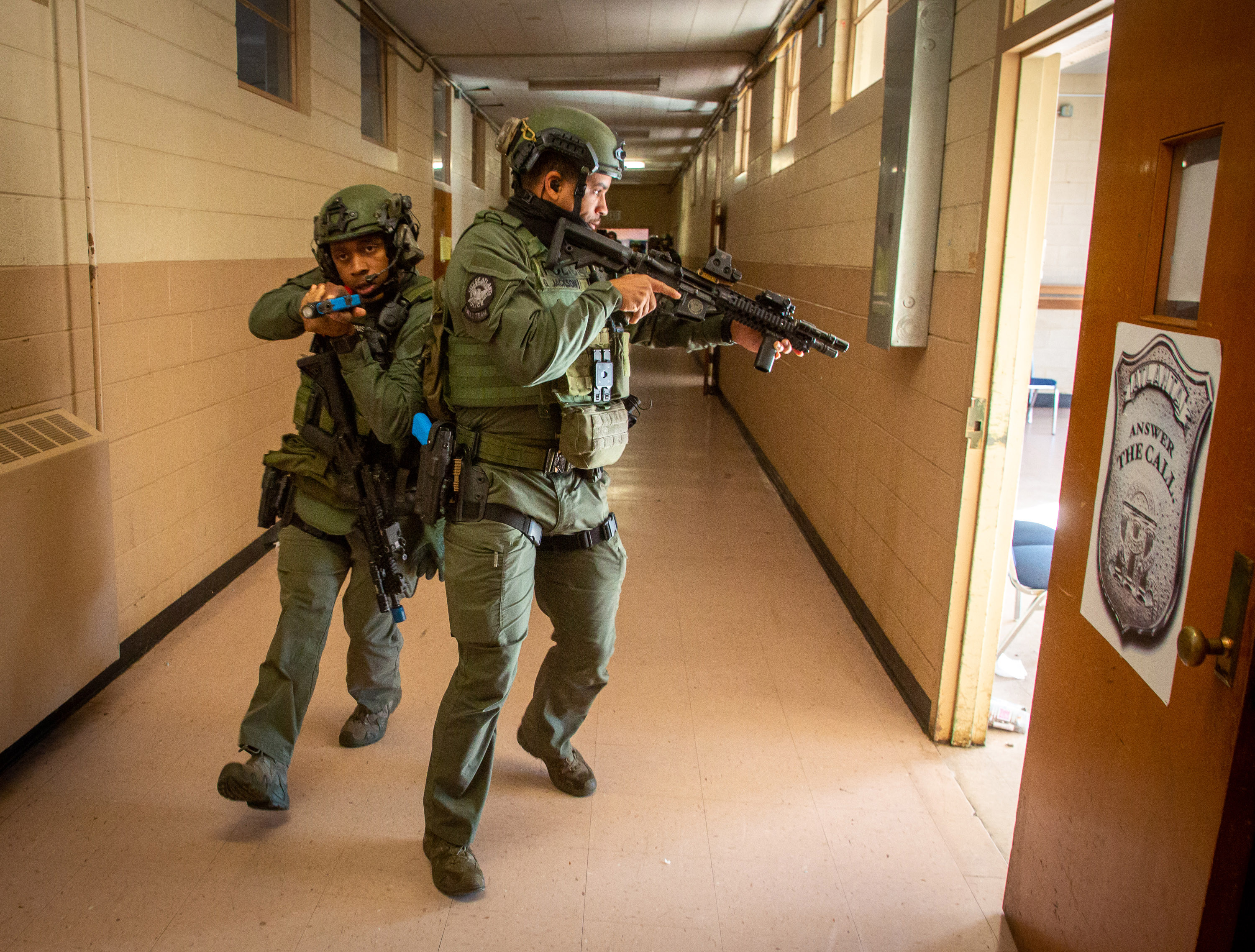The Significance of Active Shooter Training in High-Risk Atmospheres
The Significance of Active Shooter Training in High-Risk Atmospheres
Blog Article
Executing Active Shooter Training: Finest Practices for Creating a Safe and Prepared Neighborhood Setting
As communities confront the unsettling fact of energetic shooter cases, the implementation of extensive training programs becomes vital. What are the vital aspects that can change a conventional training program into a durable model for area strength?

Understanding the Requirement for Educating
In an age noted by boosting incidents of physical violence in public spaces, understanding the need for active shooter training has actually never ever been more vital. The frequency of mass shootings throughout numerous environmentsâEUR" such as schools, offices, and buying centersâEUR" emphasizes the urgency for individuals and companies to be prepared for such emergency situations. Active shooter situations can unravel swiftly, leaving little time for individuals to respond effectively. Comprehensive training efforts can outfit participants with the understanding and abilities to respond decisively.
Moreover, the mental effect of physical violence on people and areas can not be overstated. Training fosters a sense of empowerment and readiness, enabling people to really feel even more safe and secure in their environments. It additionally promotes a society of security, where understanding and watchfulness end up being essential elements of life. The advantages of active shooter training extend beyond prompt response; they include enhancing interaction procedures and enhancing total safety steps within organizations.
Trick Parts of Effective Programs
Efficient active shooter training programs include a number of crucial components that enhance preparedness and action abilities. Detailed curriculum development is important, making certain that training content is appropriate, evidence-based, and customized to the certain needs of the company or community. This consists of understanding the dynamics of active shooter events and the psychological influence on individuals included.
2nd, realistic training circumstances ought to be employed to simulate potential scenarios, allowing individuals to practice decision-making and reaction strategies in a regulated environment. These drills help with muscle memory and develop self-confidence among participants.
Third, a concentrate on communication methods is crucial. Establishing clear lines of interaction amongst police, emergency responders, and participants makes certain collaborated reactions throughout an incident. Normal updates and refresher course training courses assist maintain communication paths clear and reliable.
4th, ongoing analysis and responses systems should be integrated into the training program - active shooter training. Analyzing the performance of training with individual responses and performance metrics enables for continuous enhancement
Lastly, promoting a culture of security and readiness within the neighborhood motivates watchfulness and positive measures, making sure that individuals are not only trained but likewise taken part in preserving a safe setting.
Engaging Area Stakeholders

To successfully involve these stakeholders, it is necessary to communicate the objectives and advantages of the training. Hosting informative sessions can aid clarify the training's objective, address issues, and click for more info outline the functions each stakeholder may play. Moreover, creating a stakeholder advising committee can facilitate ongoing dialogue, permitting for varied point of views and insights to be incorporated into the training program.
Building partnerships with neighborhood leaders and organizations is also essential. Their assistance can enhance outreach efforts, boost involvement, and make sure that training is customized to the special requirements of the community. In addition, stakeholders can help in distributing info and resources, enhancing the message of safety and preparedness.
Inevitably, engaging community stakeholders not just enhances the training campaign but also cultivates a feeling of ownership amongst residents, leading to an extra resistant and enlightened neighborhood with the ability of reacting effectively to potential dangers.
Educating Distribution Methods
Using a variety of training shipment techniques is important to suit the diverse learning designs and demands of participants in energetic shooter training programs (active shooter training). Reliable training can take a number of types, consisting of lectures, hands-on simulations, on-line modules, and interactive workshops. Each approach serves a distinct purpose and can improve the total learning experience

Online components provide versatility and access, enabling individuals to find out at their very own pace. These can consist of videos, tests, and conversations to determine understanding. Interactive workshops encourage team discussions and analytic, promoting team effort and interaction skills.
Integrating a mixed technique that integrates these techniques not just enriches the training experience but likewise makes sure that individuals are better prepared to respond efficiently in case of an energetic shooter circumstance (active shooter training). By resolving various discovering preferences, organizations can create a more enlightened and receptive community
Continual Examination and Renovation
Routine assessment and improvement of active shooter training programs are vital to keeping their relevance and effectiveness. As risks develop, so should the methods and methodologies used in training. Constant examination makes sure that training material shows the most recent intelligence on active shooter cases, including lessons gained from recent events and changing for emerging trends.
To facilitate this procedure, companies ought to establish responses systems that consist web link of participant analyses, expert evaluations, and event debriefs. Accumulating data on individual performance throughout drills and exercises is crucial, as it highlights locations needing renovation and notifies future training sessions. Additionally, involving with police and Find Out More emergency situation -responders can provide beneficial insights right into the usefulness and applicability of training protocols.
Regularly scheduled testimonials of training materials and strategies must be mandated, cultivating a setting of innovation and adaptability. Organizations should additionally encourage a society of ongoing knowing, where staff members really feel equipped to recommend modifications based upon their experiences. By committing to constant evaluation and enhancement, organizations not only boost the efficiency of their energetic shooter training programs but likewise reinforce their general dedication to safety and security and preparedness within the area.
Conclusion
In conclusion, effective implementation of active shooter training necessitates a comprehensive technique that focuses on neighborhood interaction and sensible simulations. Ultimately, a dedication to continuous training and enhancement cultivates a culture of alertness and preparedness, making sure a much safer environment for all community participants.
Report this page